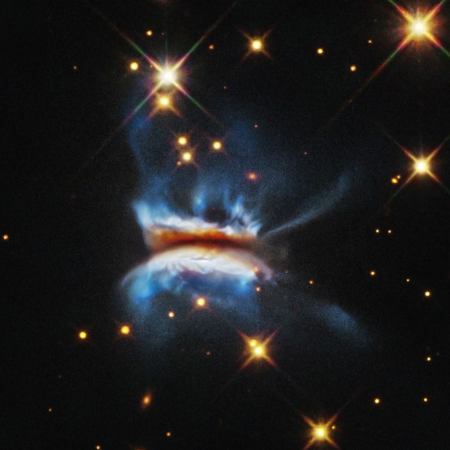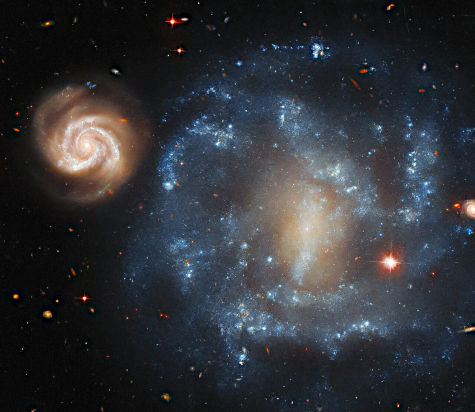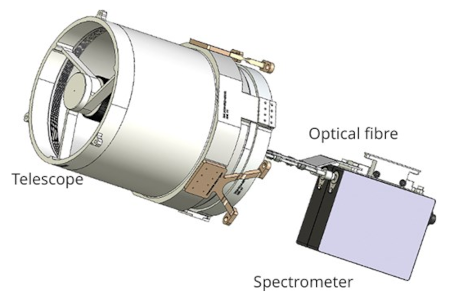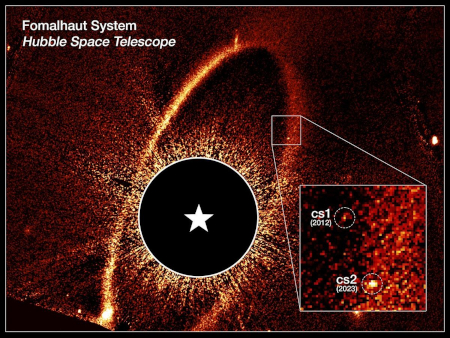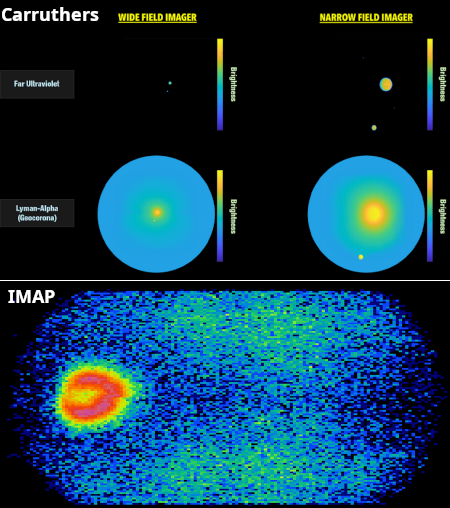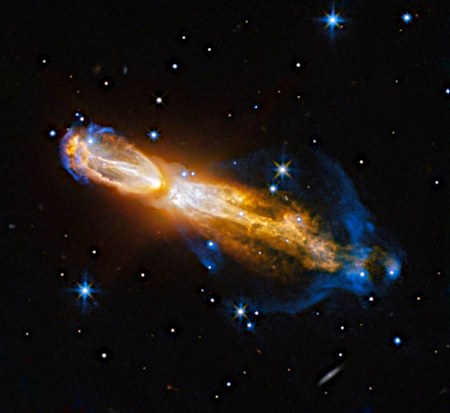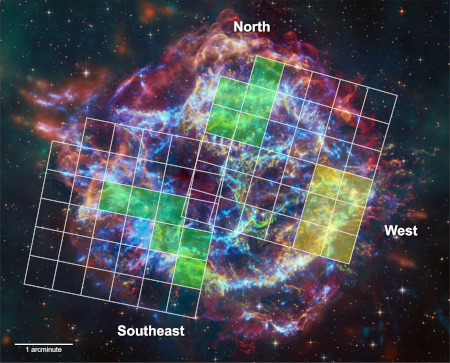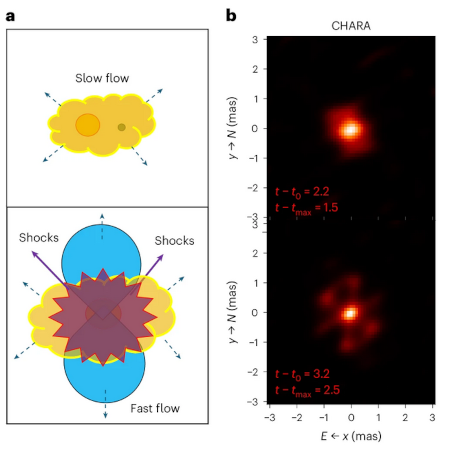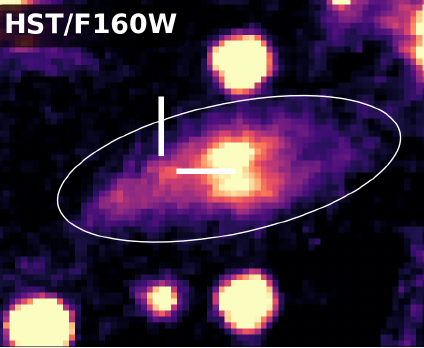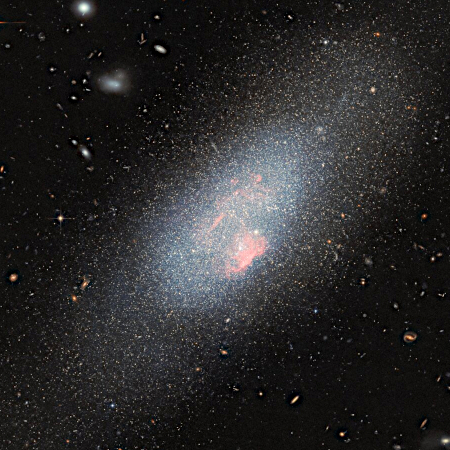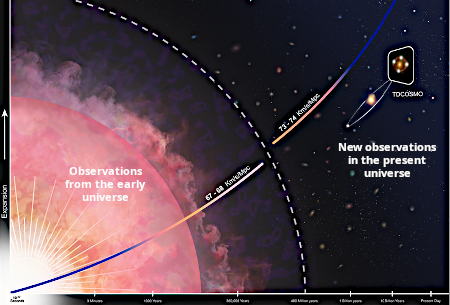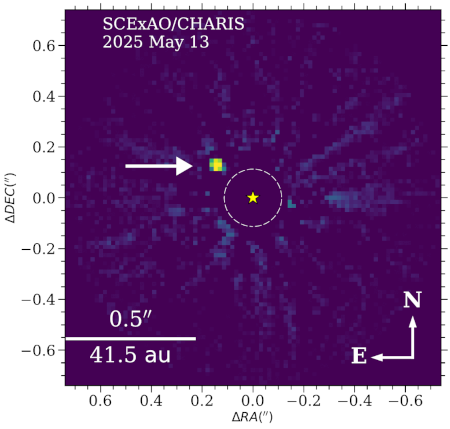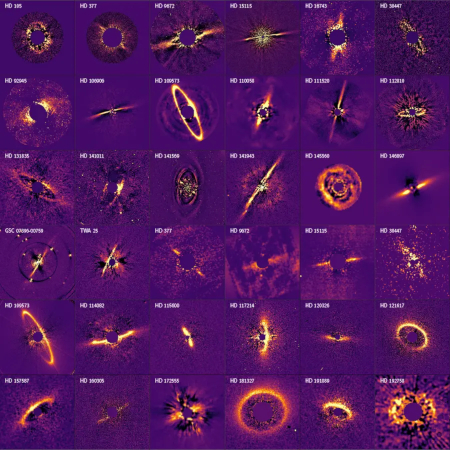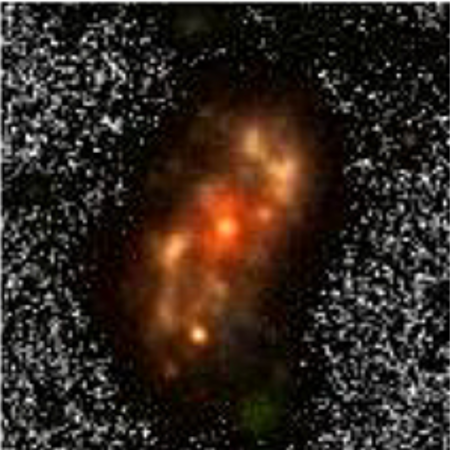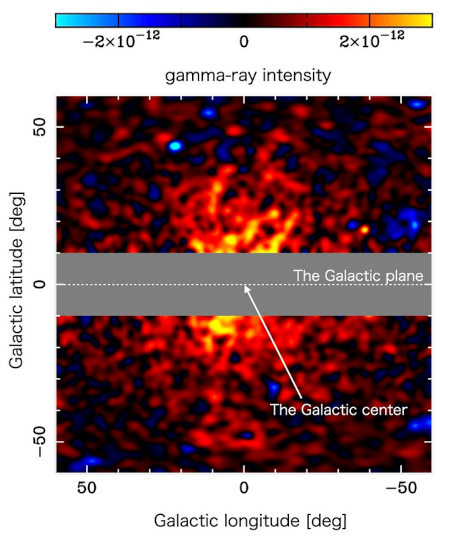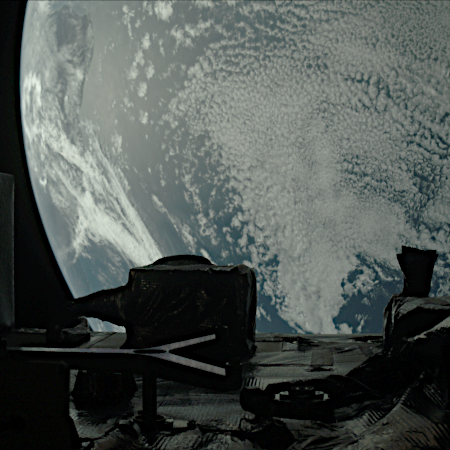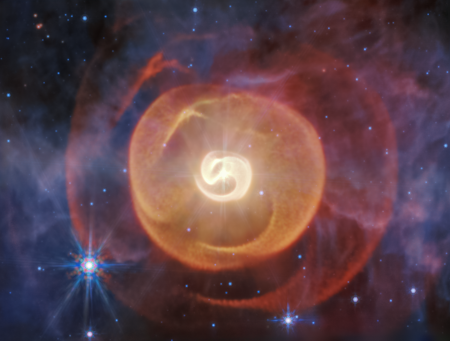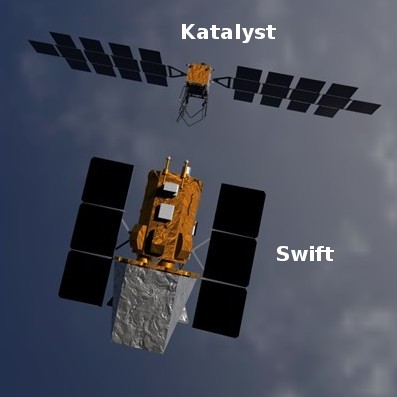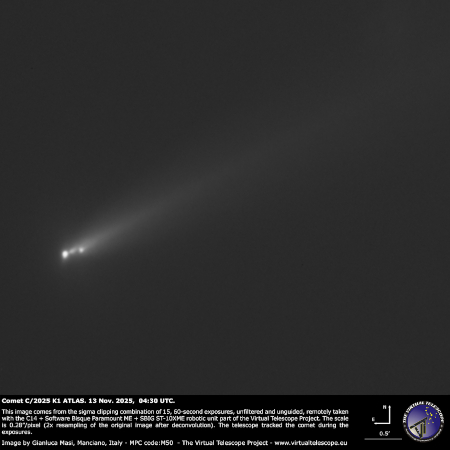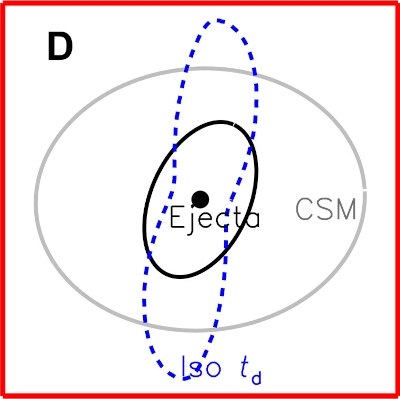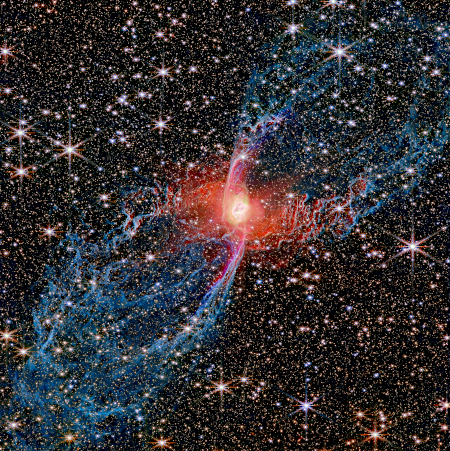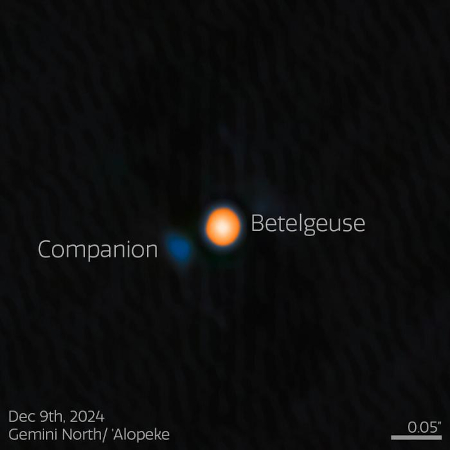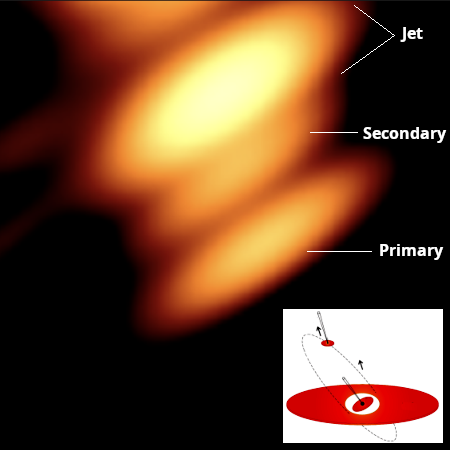Hubble images gigantic protoplanetary disk
Cool image time! The picture to the right, rotated, cropped, and reduced to post here, was taken by the Hubble Space Telescope on February 8, 2025, and shows what scientists believe is the largest protoplanetary disk so far measured.
Located roughly 1,000 light-years from Earth, IRAS 23077+6707, nicknamed “Dracula’s Chivito,” spans nearly 400 billion miles — 40 times the diameter of our solar system to the outer edge of the Kuiper Belt of cometary bodies. The disk obscures the young star within it, which scientists believe may be either a hot, massive star, or a pair of stars. And the enormous disk is not only the largest known planet-forming disk; it’s also shaping up to be one of the most unusual.
…The impressive height of these features wasn’t the only thing that captured the attention of scientists. The new images revealed that vertically imposing filament-like features appear on just one side of the disk, while the other side appears to have a sharp edge and no visible filaments. This peculiar, lopsided structure suggests that dynamic processes, like the recent infall of dust and gas, or interactions with its surroundings, are shaping the disk.
You can read the peer-reviewed paper here [pdf]. The structure of this system has left them with more questions than answers. They can’t see the central star due to the dust. They don’t know if any planets exist as yet in the system. They don’t really understand the structural details that they can see.
Cool image time! The picture to the right, rotated, cropped, and reduced to post here, was taken by the Hubble Space Telescope on February 8, 2025, and shows what scientists believe is the largest protoplanetary disk so far measured.
Located roughly 1,000 light-years from Earth, IRAS 23077+6707, nicknamed “Dracula’s Chivito,” spans nearly 400 billion miles — 40 times the diameter of our solar system to the outer edge of the Kuiper Belt of cometary bodies. The disk obscures the young star within it, which scientists believe may be either a hot, massive star, or a pair of stars. And the enormous disk is not only the largest known planet-forming disk; it’s also shaping up to be one of the most unusual.
…The impressive height of these features wasn’t the only thing that captured the attention of scientists. The new images revealed that vertically imposing filament-like features appear on just one side of the disk, while the other side appears to have a sharp edge and no visible filaments. This peculiar, lopsided structure suggests that dynamic processes, like the recent infall of dust and gas, or interactions with its surroundings, are shaping the disk.
You can read the peer-reviewed paper here [pdf]. The structure of this system has left them with more questions than answers. They can’t see the central star due to the dust. They don’t know if any planets exist as yet in the system. They don’t really understand the structural details that they can see.

